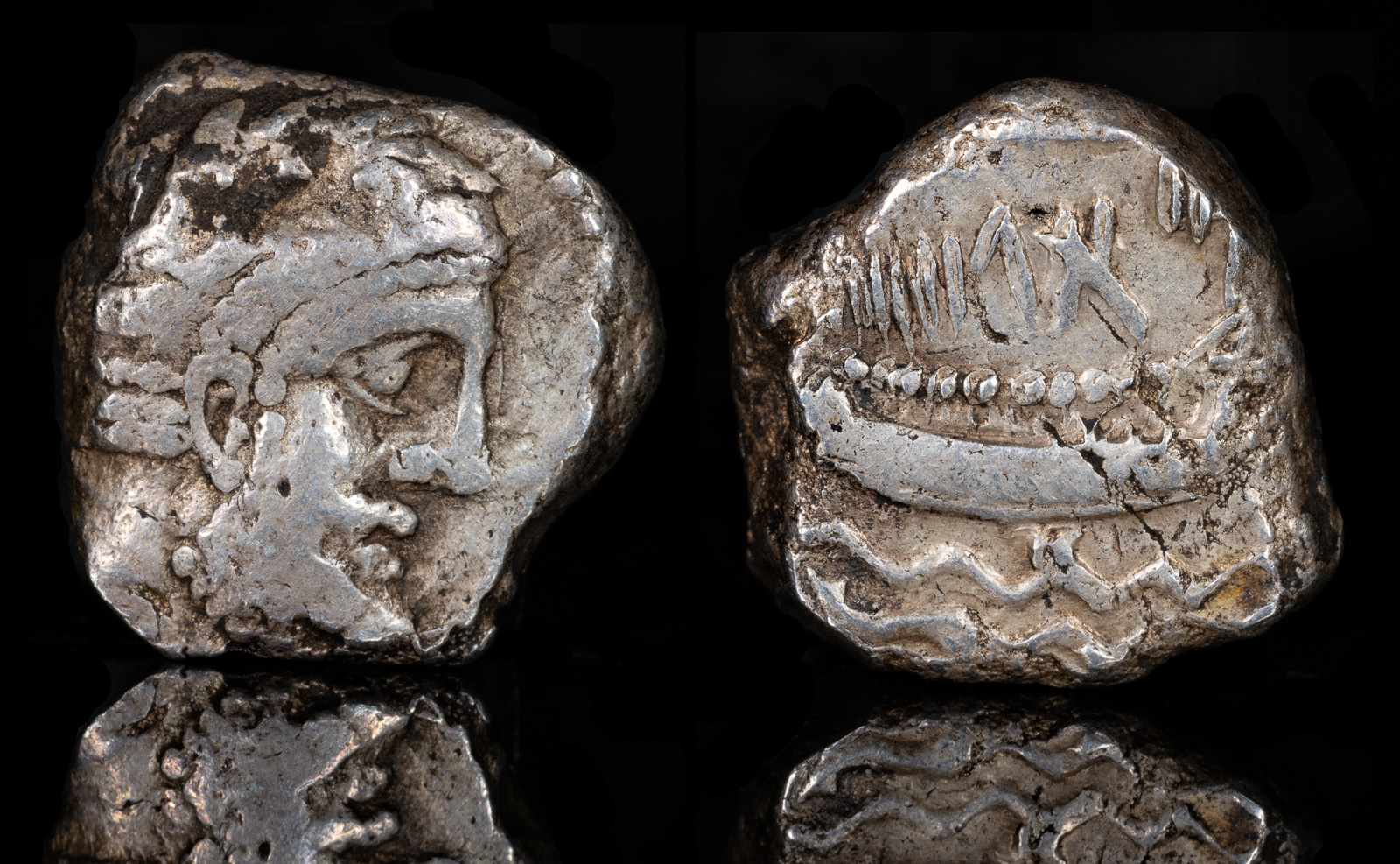
Phoenicia, Arados AR Stater
King Gerashtart (Gerostratos)
Dated RY 6(?) = 335/334 BCE 10.35g, 18mm, 10h.
Laureate head of Ba’al-Arwad to right / Galley to right with [Pataikos on prow], above waves; MA G and date (all in Phoenician) above.
Betlyon 29, note 106; DCA 753; HGC 10, 36
Ex collection of Z.P., Austria
Gerostratos, also called Gerashtart, was the ruler of Arados, also called Arwad, when Alexander the Great stopped by. What little we know about Gerostratos is in fact connected to Alexander.
Based on coinage, Gerostratos took over as king of Arados in 339 BCE. Phoenician kings weren’t like kings elsewhere, in that they tended to share power with citizen leaders. They weren’t all powerful and could be replaced by citizens if their performance was poor.
Nevertheless, Gerostratos was the head of Arados when Alexander came calling with his army. Although he was the king, he wasn’t home. Instead he was out sailing with Autophradates, who commanded the Persian fleet. At the time, it was customary for Phoenician kings to physically lead their ships in battle, and the bulk of the Persian armada was in fact Phoenician.
In his place was his son Abdashtart, who also went by the name Straton. How exactly did he get “Straton” from Abdashtart? We’ll probably never know, but if this were today his name would probably be “Smith”. So Straton, well aware what Alexander was capable of, met him on the road and handed over the keys to the city, along with the keys to the temple, the bath house, the port, and his personal phone number. Alexander, for his part, didn’t destroy the city.
As far as we can tell, Gerostratos remained king under Alexander, at least for a few more years. It also doesn’t seem like his son ever led the city. The Arados fleet, which eventually left Autophradates once the word reached them, must have played a part in the Siege of Tyre, which was unfortunate because the Phoenician cities were all on friendly terms.
Sidon, Byblos, and Arados under Gerostratos submit to Alexander the Great as he travels through Phoenicia.
Alexander the Great completes the Siege of Tyre. 6000 soldiers are killed in the city, 2000 Tyrians are crucified on the beach, and 30,000 are sold into slavery. Their leader Azemilkos is pardoned but deposed. Gerostratos of Arados presumably plays a part.